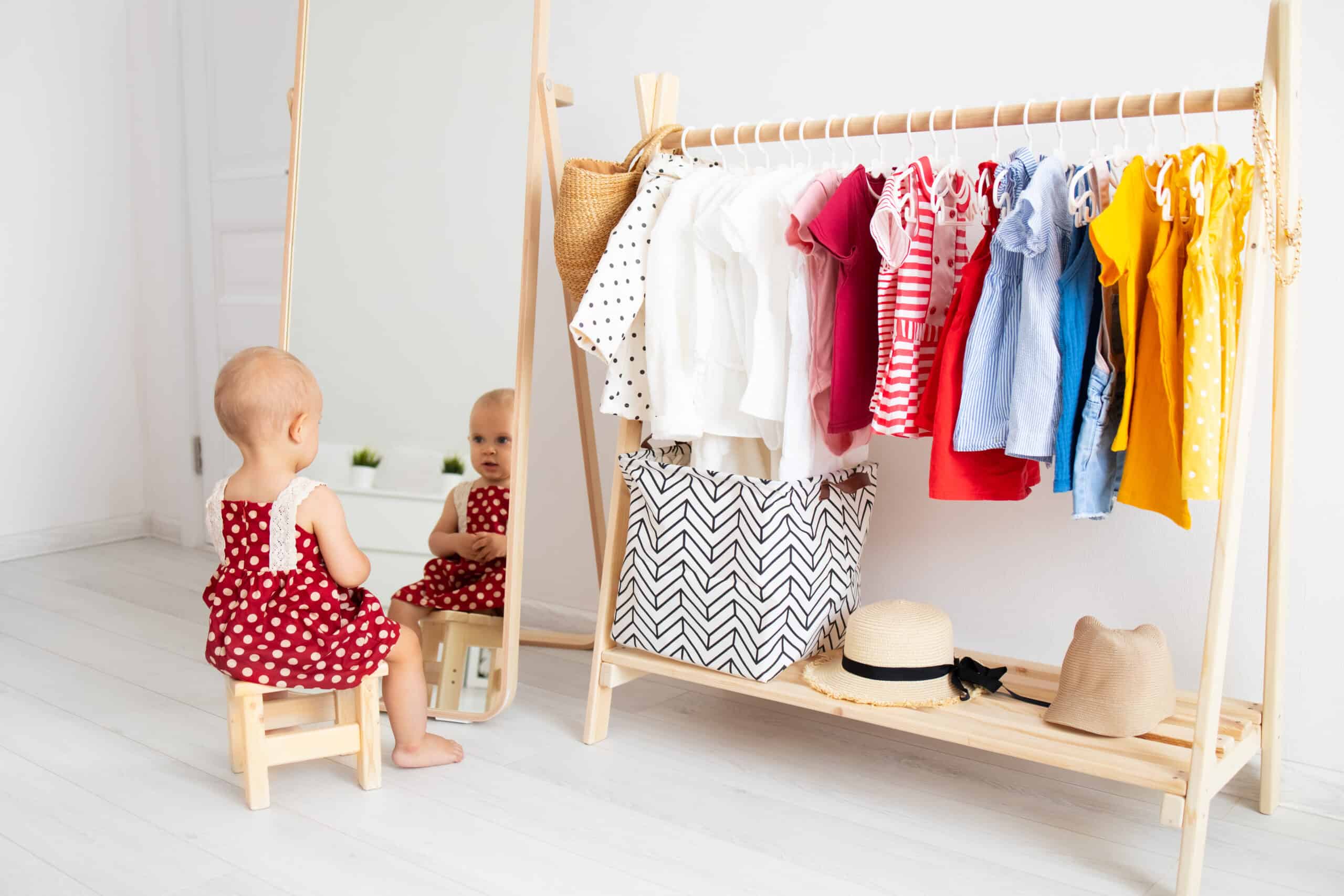Key Points
- Montessori furniture is generally made from natural materials, such as wood.
- Montessori furniture prioritizes movement and freedom over rigidity.
- Giving children accessible furniture at home is important. The Montessori method calls for parents to never do anything for their children that they could do themselves.
What is Montessori furniture and how is it different from non-Montessori furniture? Montessori furniture is generally crafted of solid wood. Maria Montessori felt that natural materials were the most suitable for young children. Natural materials, like wood, are generally non-toxic. And solid wood is durable. That is why the majority of Montessori furniture is made of natural wood, sometimes with a white border or rim. This is the sort of furniture we will be referencing.
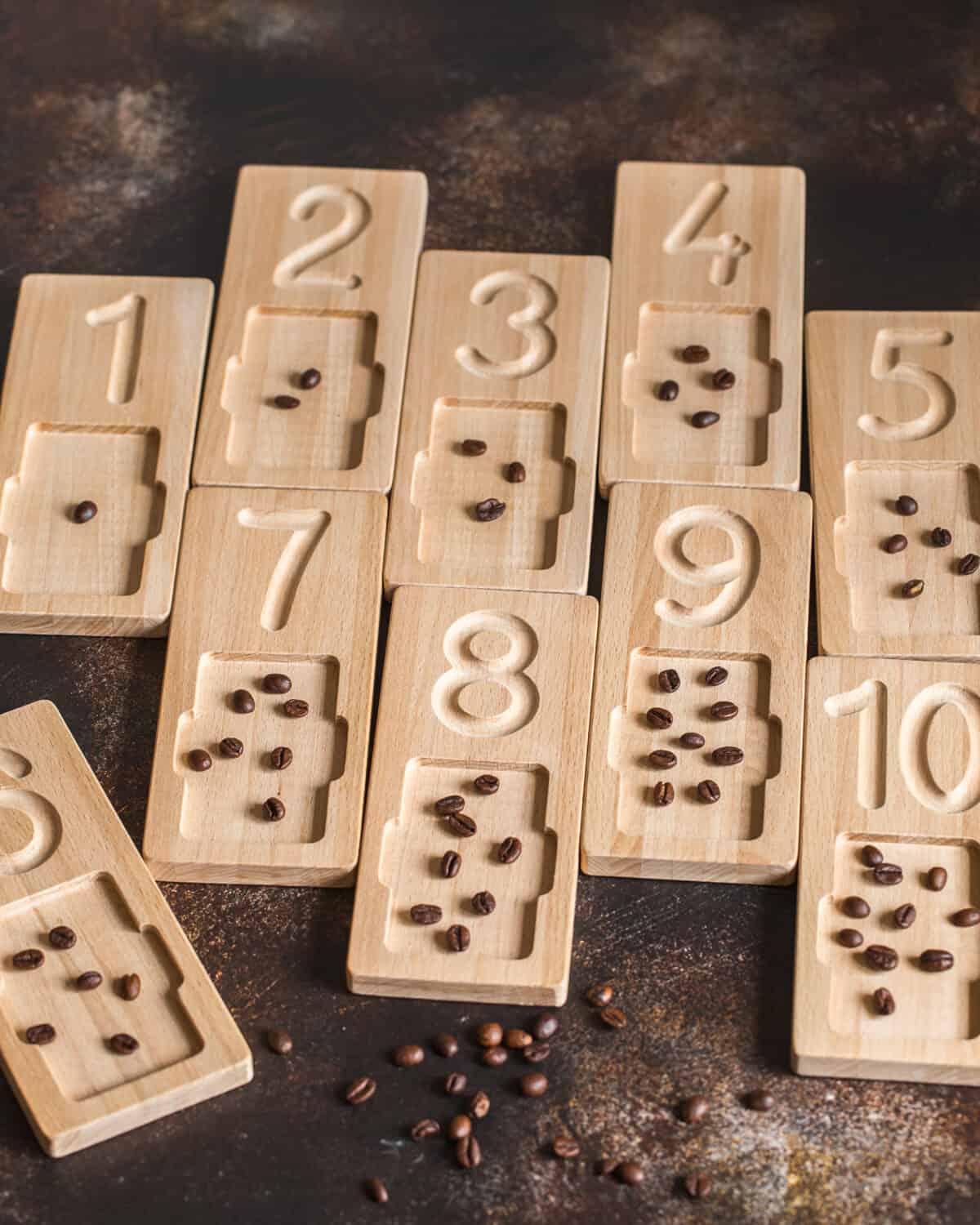
©Nataliia Zhekova/Shutterstock.com
The wonderful thing about Montessori furniture is that it will grow with your child. So, while it may cost a bit more on the front end, it is versatile and will serve your family for many years. Whether you’re setting up your home to homeschool your child using Montessori curriculum and methods or simply desire to have a child-friendly space in your house, keep reading to learn which pieces of Montessori furniture are essential for each room in your home.
Montessori Furniture: Understanding the Approach
To have a better understanding of and appreciation for Montessori furniture it is important to understand the philosophy behind Montessori education. Maria Montessori (1870-1952), the founder of this eponymous method of educating young children, believed that children were capable of educating themselves. To facilitate these young minds in their pursuit of knowledge she believed it was important for their environment to be tailored to their diminutive size. Montessori classrooms are mixed-age. Therefore, the furniture in a Montessori classroom is often a variety of different sizes, much like the students themselves. This is one of the ways in which Montessori furniture differs from the tables, desks, and chairs found in traditional classrooms.
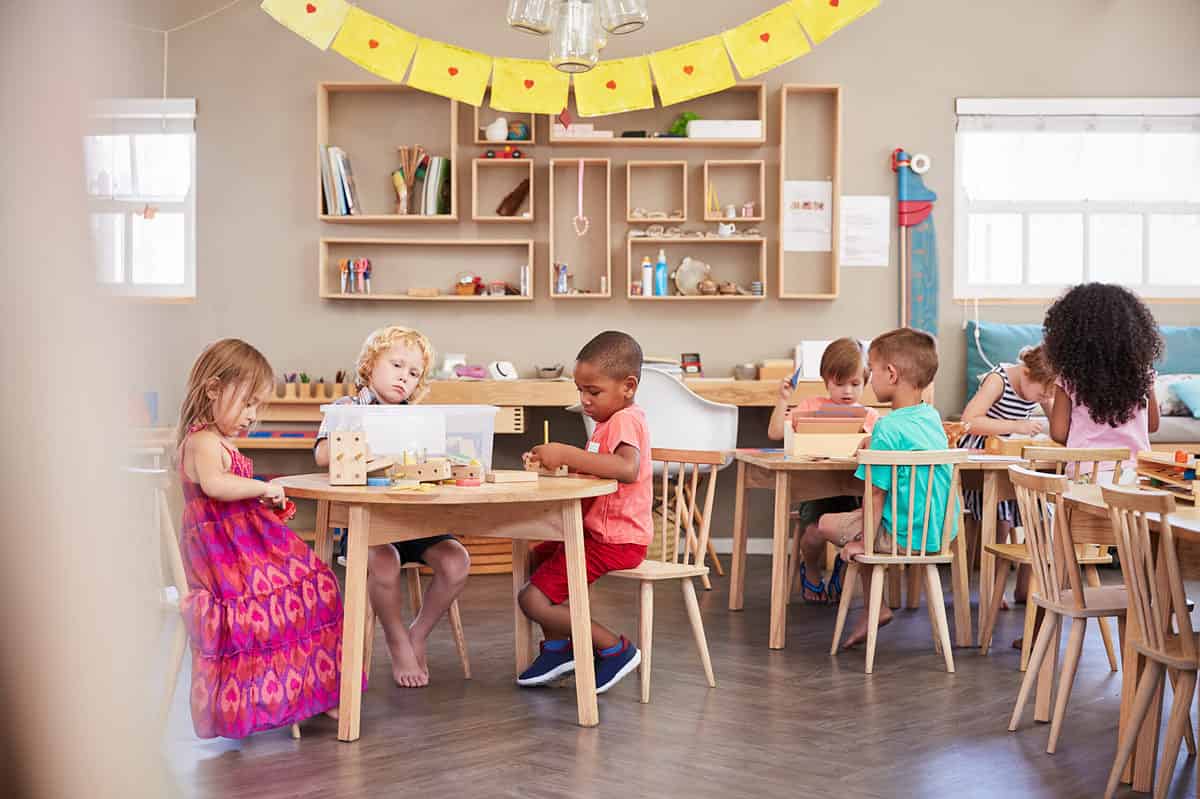
©Monkey Business Images/Shutterstock.com
Philosophy of Size
Most of the furnishings in a traditional classroom are more of a one size fits all variety. Many of us probably remember a classmate who simply defied the size constraints of the average schoolroom desk. Until arrangements could be made to procure a larger or smaller sized desk, the classmate was forced to learn in a wholly unsuitable and uncomfortable manner. And who could forget the fidgeting and excess movement associated with vain attempts to get comfortable? Though completely understandable, it was nonetheless, distracting to classmates and provoked the ire of the teacher.
Because Montessori education doesn’t use the direct instruction approach, these problems are practically unheard of in a Montessori classroom. There will be those students in a Montessori class who do not fall within the norms of their peer group. However, modifications will be made and accommodations in place upon their arrival.
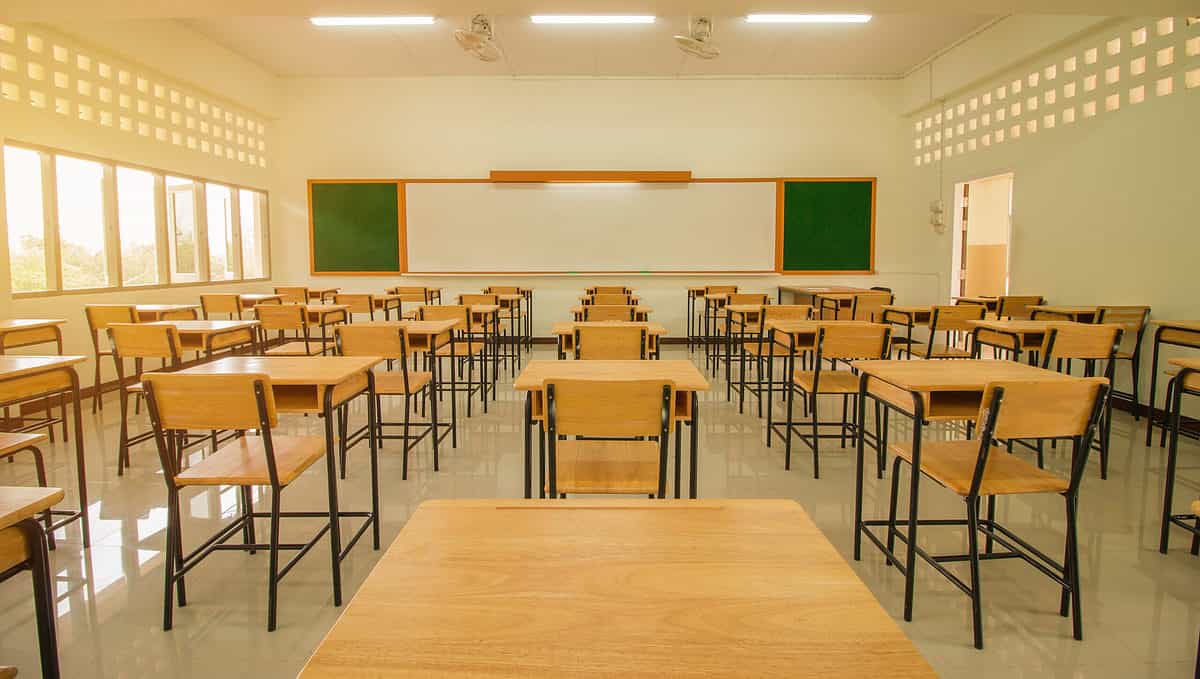
©smolaw/Shutterstock.com
Philosophy of Movement
”The task of the educator lies in seeing that the child does not confound good with immobility and evil with activity,” according to Maria Montessori. The furniture in a Montessori classroom makes way for movement. Montessori classrooms consist of different stations. Some stations are at height-appropriate tables with corresponding chairs. Other stations are on the floor, where children can lie down if they’re feeling so inclined. Absent are those tidy rows of desks that are a hallmark of direct instruction models of education. Classrooms are designed for and encourage movement.
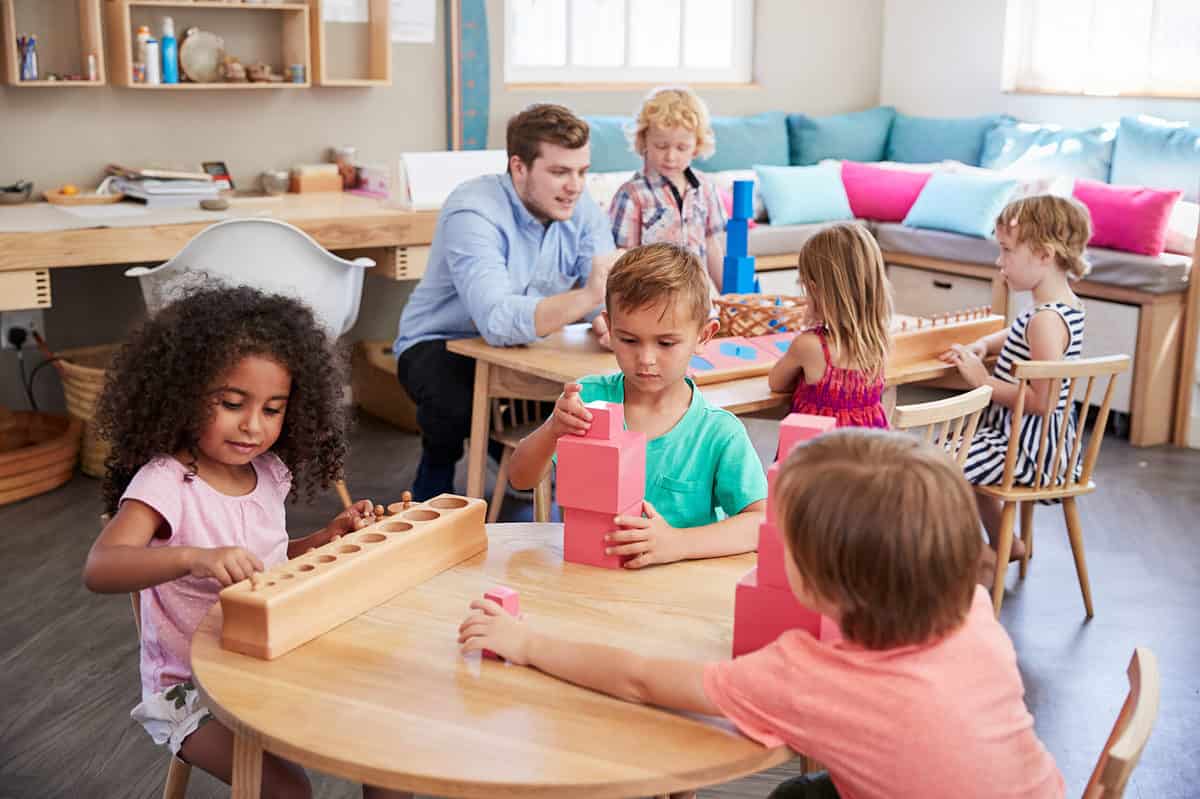
©Monkey Business Images/Shutterstock.com
Montessori Furniture: In the Home
Family Room / Playroom
if your home is like most, the family room is where most of the action takes place. It’s where the shoes get kicked off and the coats get shed. Place low shelves along one wall, with corresponding hooks that your children can reach. Even the youngest children will be able to put away their shoes and, with a little help and patience, hang up their own coats. Maria Montessori was a firm believer in not doing anything for a child that they are capable of doing themselves. Getting them to put away their shoes and hang up their coats is a great start!
Unless you have a separate playroom for your children, the family room is also where you would set up a child-sized table and chairs /stools. Situate the table and chairs situated near a window. Maria Montessori felt that natural light was the best. If your home has a room devoted to your children and their assorted trappings, that is where you would (also) set up the table and chairs.
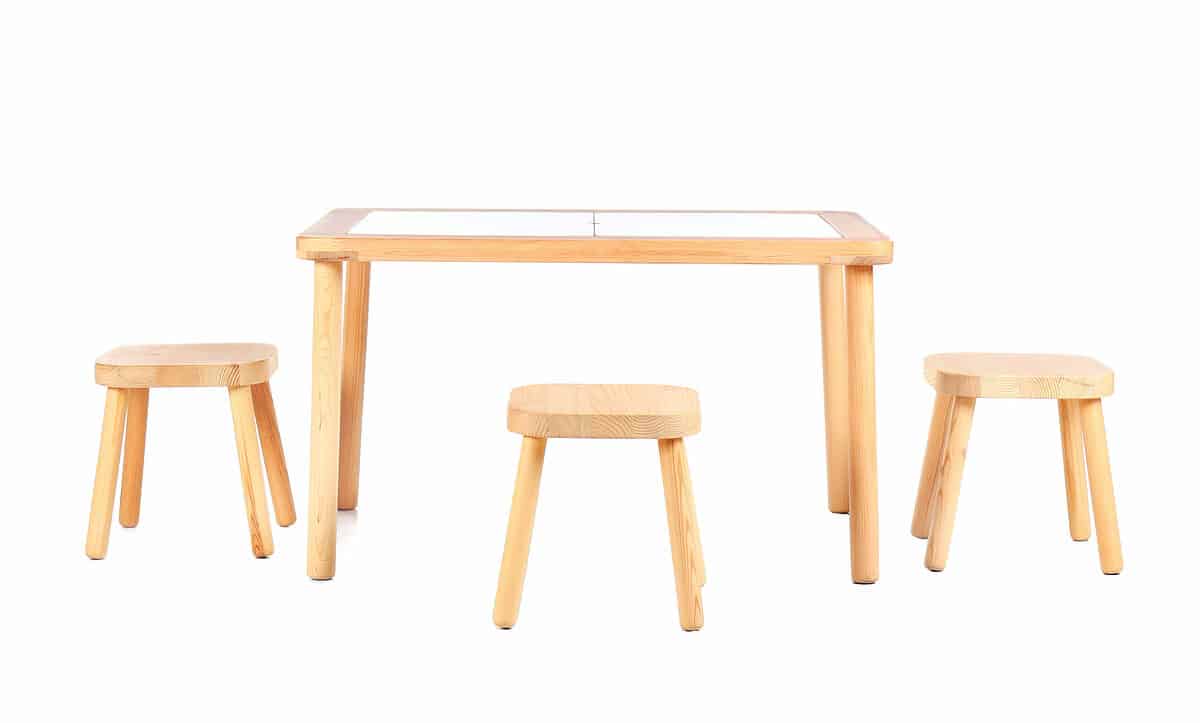
©New Africa/Shutterstock.com
Near the table, a low shelf with art supplies and books is suggested. And though it's not exactly furniture per se, a rollable play mat is a must-have item. Especially if your family room or playroom has hardwood floors.
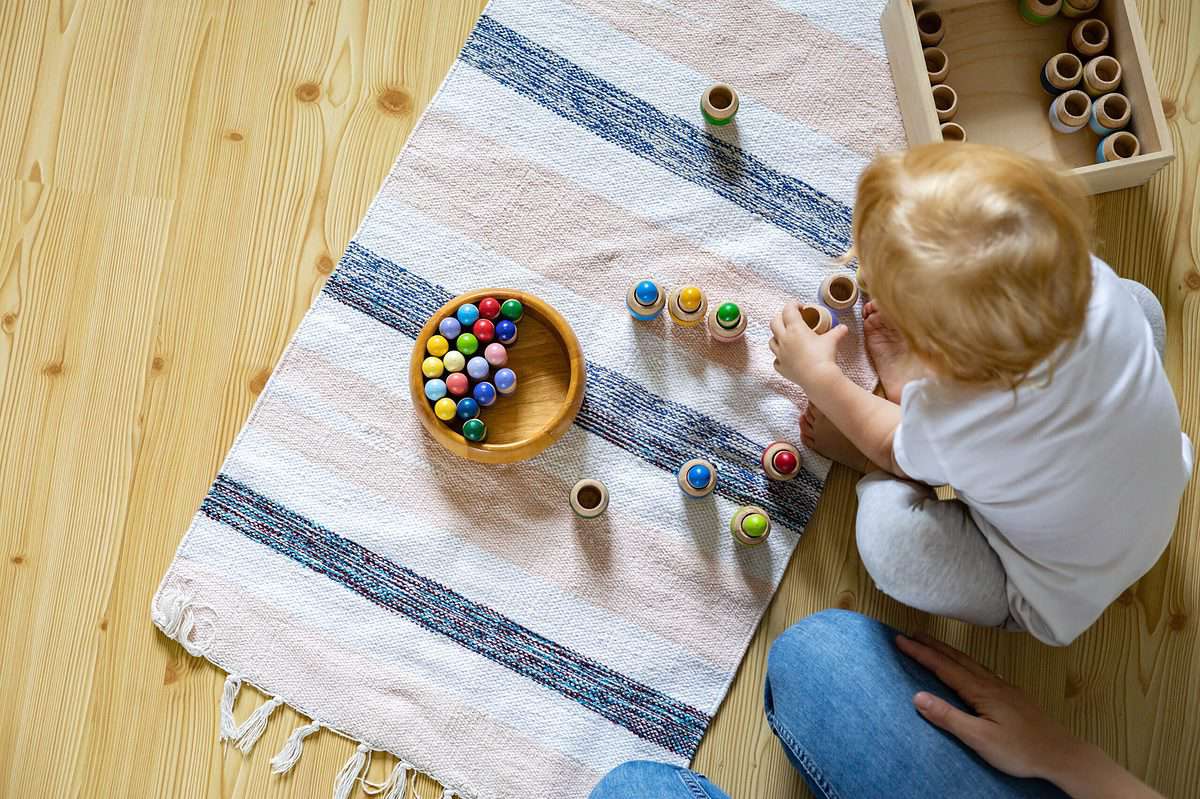
©Kostikova Natalia/Shutterstock.com
Centers
If space is limited, have an area of the room that works as a revolving center, offering different activities at particular intervals, or as your child expresses interest. Maria Montessori believed that children experience sensitive periods in which their neural pathways are open learning new skills and acquiring facts and information. This is the reason you might set up the painting easel 15 separate times before your child suddenly shows interest in painting. Possibly to the exclusion of activities they used to enjoy. It’s natural. Don't sweat it. Continue to give your child access to their newfound interest as long as they continue to delight in it.
Those who are fortunate enough to have ample space are encouraged to set up multiple stations for their children to visit. Younger children should be given 2 to 3 choices, while older children can typically navigate 5-8 stations. Stations, or activity centers, are simply different areas of the room that provide the materials for learning a variety of different subjects experientially.
Bedroom: The Bed
Your child’s bedroom should be comfortable and inviting. However, it should not be too stimulating. Therefore, A Montessori bedroom is minimally furnished with a Montessori bed and a Montessori wardrobe. Both of these furnishings are designed with the child in mind. Montessori beds are designed to be easy and safe for children to get out of without assistance. Montessori beds are low. There are many variations, but all of them provide children with a sense of security and a measure of independence.
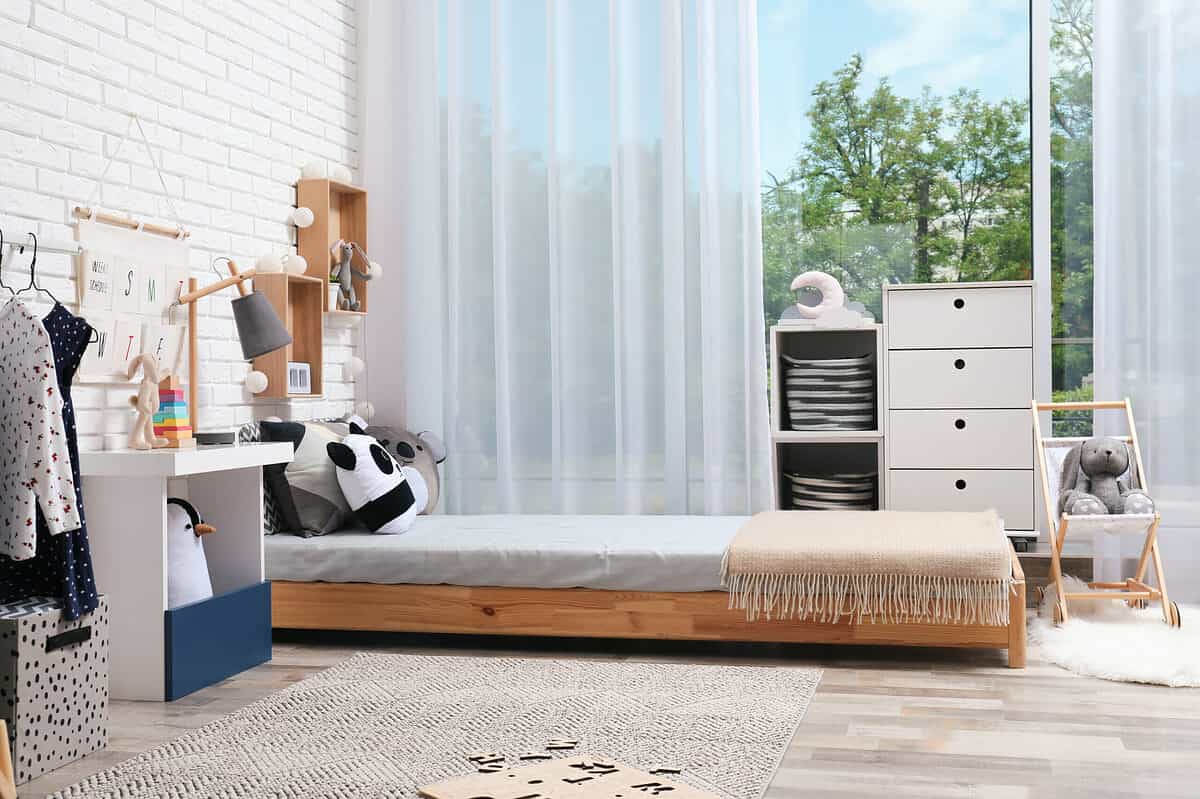
©New Africa/Shutterstock.com
The Wardrobe
Likewise, a Montessori wardrobe is a kid-friendly clothes organizer, that allows children to dress themselves. A Montessori wardrobe can take on a number of different configurations. mini consist of a series of hollow cubes stacked on one another. Others may have shelves. Some will have a rod from which to hang clothes. However, one thing they all have in common is that they are open and the clothes are visible to the children. The way the clothes are arranged differs depending on individual preferences and abilities. Some families prefer to place daily outfits in separate cubes while others arrange their clothes by color. there is no right or wrong way to organize a Montessori wardrobe. Your way will be the way that best accommodates your child.
The Full-Length Mirror
One other piece of furniture that is recommended for a Montessori bedroom is a full-length mirror. A full-length mirror is an essential tool for helping children learn to dress themselves. As adults, we no longer require visual cues to put our clothes on. Young children, do need visual cues to get their clothes on properly.
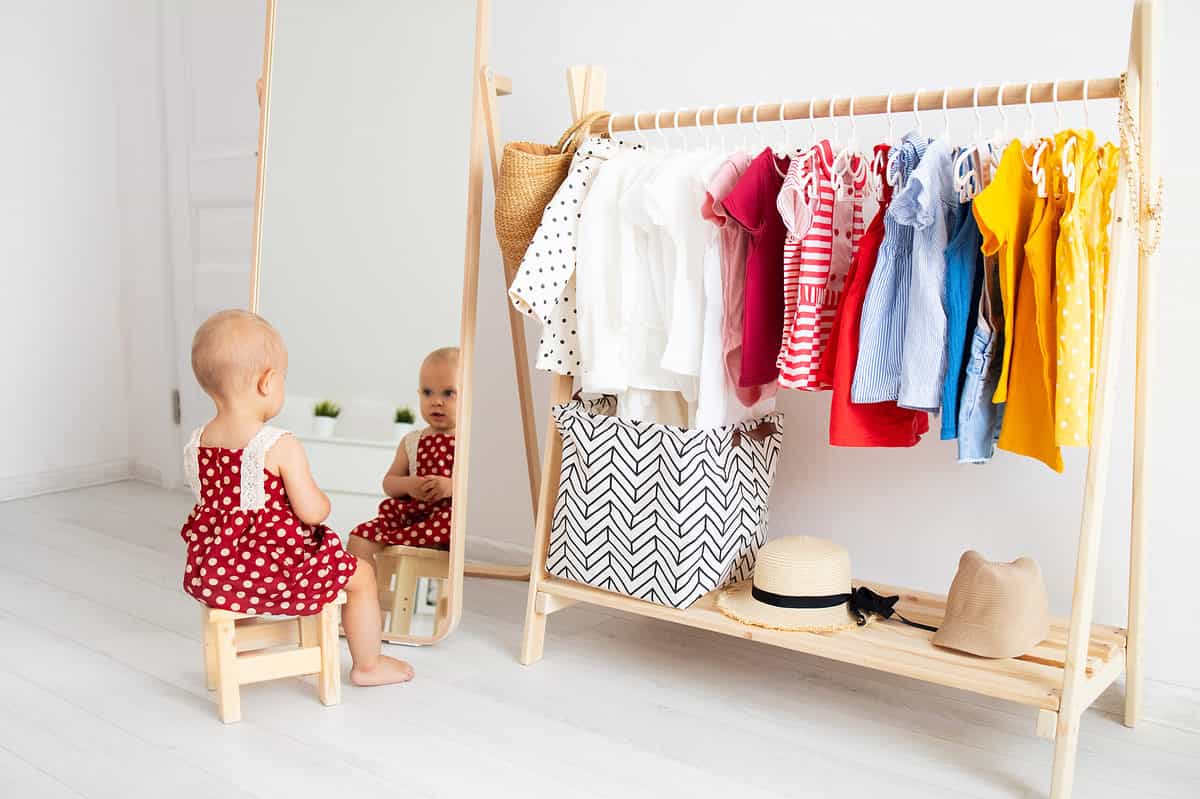
©Ellona Kritskaya/Shutterstock.com
The only other furnishing in a Montessori is a basket containing a few books or a puzzle to keep them entertained or engrossed until you awaken. Rotate the books and puzzles regularly to maintain the magic moment.
Montessori Furniture in the Bathroom
In the bathroom a stool is indispensable. A stool will allow your child to wash their hands and brush their teeth without assistance. However, do not confuse assistance with observation. While your child will be capable of completing the tasks themselves, it's still a good idea for you to observe their hand washing and tooth brushing. Toddlers are, after all, completely oblivious to the idea of less is more when it comes to soap and toothpaste!
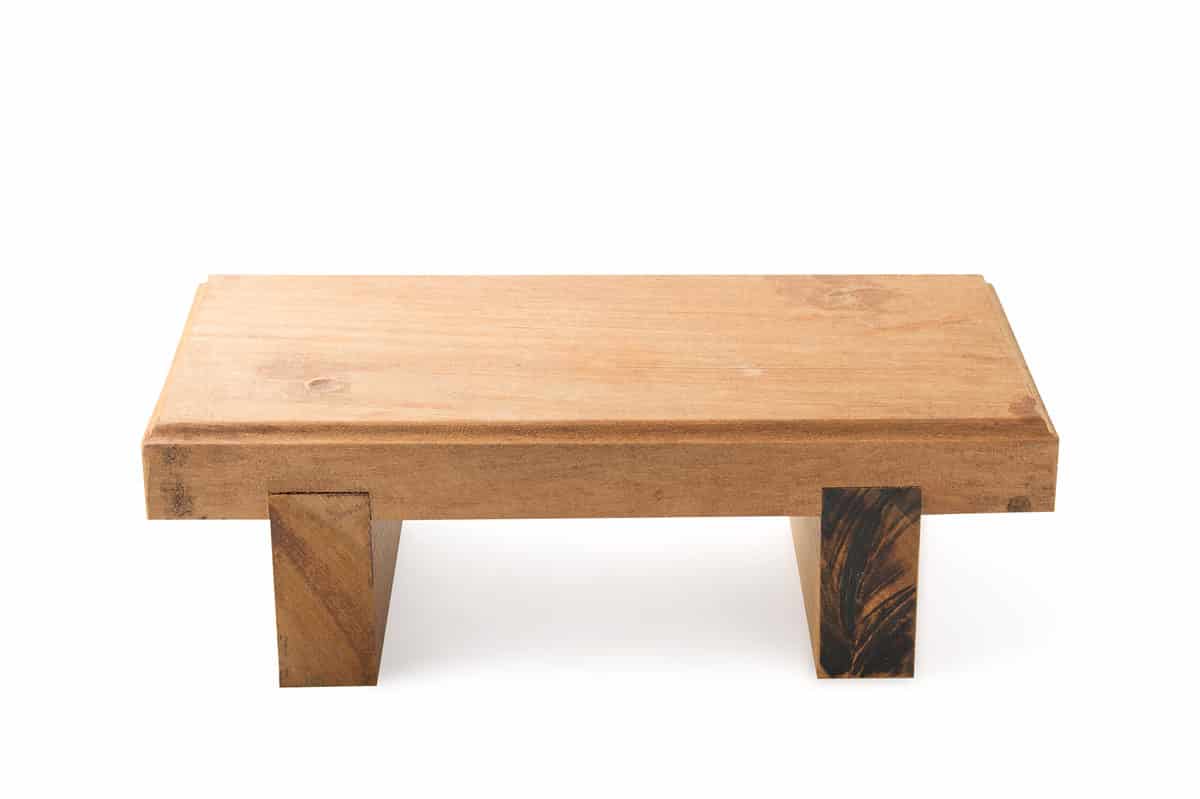
©Sorrawit Poolsawat/Shutterstock.com
Montessori Furniture in the Kitchen
The two most important pieces of Montessori furniture in the home kitchen are the chef's tower and a highchair. As its name suggests, the chef's tower enables your child to help with the cooking! The tower is adjustable, allowing for the growth of your child, so that they may be at the most suitable height for working at a counter or kitchen island. If you have an eat-in kitchen you will also want to have a sturdy adjustable wooden highchair.

©Ground Picture/Shutterstock.com
How Expensive is Montessori Furniture?
Montessori furniture is not cheap, but it is not prohibitively expensive either. You can expect to pay a few hundred to several hundred dollars for each piece of furniture you purchase. Alternatively, you can buy furniture packages that come with everything you'd need. These will, however, run you a few thousand to several thousand dollars. If these costs are too high for you, another consideration could be crafting the furniture yourself. If that is not an option, then it may be worth considering if furnishing your home in the Montessori style is the right choice for you.
Whether you're furnishing your home for homeschooling, or simply making your life and your toddler's life easier, Montessori furnishings have got you covered. From the bedroom to the kitchen, and all rooms in between, using Montessori-inspired furniture gives your child a leg up!
The image featured at the top of this post is ©Ellona Kritskaya/Shutterstock.com.
